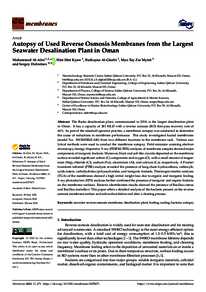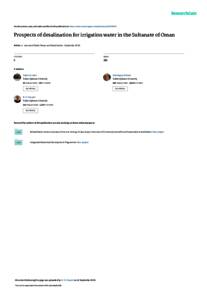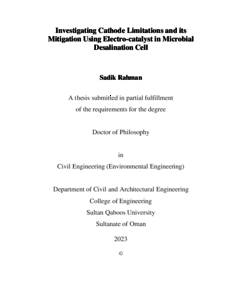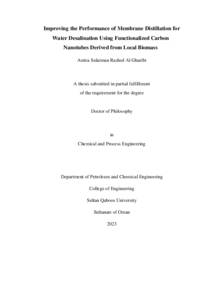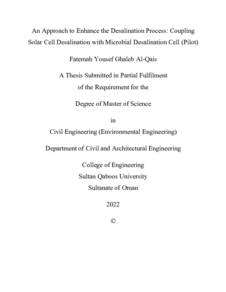Document
Decentralized stand-alone multi effect desalination (MED) system using fixed focus type scheffler concentrator for the remote and arid rural regions of Sultanate of Oman.
Identifier
DOI: 10.1088/1757-899X/376/1/012006
Source
IOP Conference Series: Materials Science and Engineering. v. 376, 1, 012006
Contributors
Majumder, M. C. , Author
Sudhir C. V., Author
Country
England.
City
Bristol
Publisher
Institute of Physics Publishing.
Gregorian
2018-06-27
Language
English
Subject
English abstract
Rising population and industrialization made desalination of prime importance in physically water scarce Sultanate of Oman for fulfilling the gap between the rising demand and supply of fresh water. Almost 80-85% of the installed and planned desalination plants in the Sultanate are based on Combined Cycle Gas Turbine (CCGT) power plants while remaining are standalone which includes about 5-7% of the installed plants for rural arid and dry regions. All the installed and planned desalination plants utilises fossil fuels for their operation and are based on Reverse Osmosis (almost 90-95% of the plants) and Multi Stage Flash technologies. Sultanate of Oman is a tropical country with most of the regions being arid and dry receiving solar energy most abundantly. But the utilisation of solar energy in the country is mostly limited to installations based on photovoltaic systems. Only recently solar thermal Enhanced Oil Recovery plant with 1 GWth power output has been undertaken in the country at Amal oil field. A pilot standalone Multi Effect Desalination (MED) plant using fixed focus type Scheffler concentrator for remote and arid rural regions of country has been discussed in this paper to address this gap. This pilot plant has been designed for producing 100 kg/day output based on three stage cross flow type multi effect desalination technology with two 16 m2 Scheffler concentrators and operates in the temperature limits of 170 - 90°C. Preliminary testing carried out on the system during summer and winter period has shown that with available insolation above 700 W/m2, steam at a pressure of 8 to 8.5 bar could be generated in a batch experiment after 2-3 hours from starting the operation for 42 to 55 kg of water in the header of the system. This steam generated is further utilised for desalination in three stages. The initial lag period for the system is measured to be 35-50 minutes depending on the quantity of water in the header, wind speed and solar insolation. System comes out of the lag period when solar insolation reaches just above 650-700 W/m2. The desalination output for the system is measured between 60-65 litres per day for the summer period. Batch type intermittent operation, tracking errors, optical concentration losses, receiver convection losses, brine heat losses are few of the reasons observed based on the analysis for the lower output from the system. Experimentation has given a direction to make operation of the system from batch to continuous production while reducing optical and convection losses through appropriate rectifications for increasing overall yield of the system.
ISSN
1757-8981
Category
Conferences & workshops


